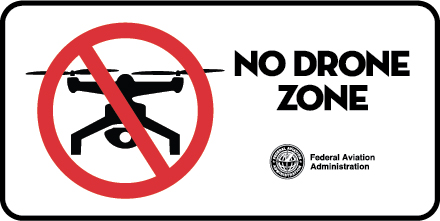- Joined
- May 14, 2016
- Messages
- 159
- Reaction score
- 53
Perhaps we should cordon off the entire area & just show photos of Rushmore to fully preserve that wilderness feel? We certainly wouldn't want to risk a 3 pound plastic drone breaking off a piece of Washington's nose!
For sure there is room for discussion about drawing the lines in terms of where human activity in one form or another should be prohibited or allowed, encouraged or discouraged. I don't see sarcastic remarks, which is what I take your comment to be (please forgive me if I'm wrong and correct me), as helpful to forwarding the discussion in terms of making wise choices along the road of sensible environmental management.
Let's take a quick look at Mt. Rushmore as an example. It seems to me that mentioning "wilderness feel" and Mt. Rushmore in the same breath is a conflation of two separate issues. On one hand, there’s the environmental disruption caused by the creation of Mt. Rushmore which occurred many years ago and irrevocably destroyed the “wilderness feel” of the area (as well as royally screwing up the ecosystem while creating a spectacular monument). On the other hand, there is the use and enjoyment of the Mt. Rushmore area in today’s world of the sUAS. Since the wilderness feel at Mt. Rushmore disappeared long ago, discussing it in regard to the use of sUAS in the area today doesn’t make any sense. If we are going to discuss whether or not sUAS might interfere with the enjoyment and preservation of wilderness, then let’s talk about places that are still wild or relatively so, not Mt. Rushmore.
But aren’t there things beyond the feel of wilderness and the environment that should be considered when contemplating the use of sUAS in the Mt. Rushmore area? I think there are, and one of them is the enjoyment of those who visit the area. Let’s face it, the buzzing noise as well as the sight of drones can be really distracting, and for somebody wishing to capture still or video footage of the area sUAS can be an interference, an impediment potentially requiring time consuming, perhaps costly or impractical post production retouching in order to remove. I think there are potentially a great many valid arguments on both sides for and against the use of sUAS at Mt. Rushmore. One possible solution might be some controls such as allowing flying on certain days and/or certain times of the day and a certain number of permitted flights.
Dirty Bird has previously and rightfully pointed out that noise is a part of life and that we must all at times tolerate noise that we would prefer didn't exist. There is another side to this, however, which is that there are controls placed on the noises we might make. Late night parties can result in noise complaints and fines because they disturb the rights of others. Hospital quiet zones exist to protect the sick and injured. Children are excluded from certain facilities because of the noises of which they are capable. There are many other examples of regulatory noise limitations including those placed on airports and manned aircraft by surrounding municipalities. In certain places and at certain times it may be fair to judge the noise made by drones disruptive in a manner similar to these other examples and to legislate against their use. To be sure, the pendulum will swing too far against the use of sUAS in some circumstances.
Personally, I think Mt. Rushmore would make an excellent candidate for places within the National Parks that the piloting of sUAS should be allowed. The monument is quite spectacular. It has been and I’m sure will remain a location of great interest. Aerial video footage of the area would probably have many positive applications. Most all of the wilderness feel of the area has long since disappeared so making an argument against the use of sUAS there in order to protect a long lost sense of wilderness would seem silly on the face of it. Similarly, any environmental concerns about a downed drone (or even a dozen of them) would seem picayune compared to the environmental destruction caused by Mt. Rushmore’s creation.
Last edited:






